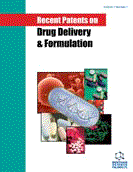Abstract
Background: The development and progression of atherosclerosis is known to occur at a sluggish pace and the lesions remain concealed for a long duration before the factual situation of the complex atherosclerotic etiology affecting various organ gets apprehended. The root cause mainly involves an imbalance or malfunction of the cholesterol metabolizing pathway. The till date therapeutic alternatives include oral hypo-lipidemic agents along with advances made in biotechnology/tissue engineering and surgical procedures for management purpose. However, with the advent and upsurge of nanotech delivery systems, along with meticulous indulgence and identification of the causative genes in the etiology of disease have opened a new therapeutic area that has far reaching application potential for effective management of such chronic disease requiring lifelong therapy.
Methods: Various genes that have implication in atherosclerosis were reviewed along with research in delivery vectors that have been employed for gene therapeutics and hurdles in successful delivery were elaborated. Relevant patents are discussed systematically to clearly support and highlight the developments made.
Results: Patenting activity in the delivery of genes for atherosclerosis so far primarily covers use of viral vectors. With the identification of new targets, a list of candidate genes are available that can be potentially exploited for therapeutic purpose. Though the delivery of candidate genes using viral vectors has been well explored, the limitation of viral vectors have seized the much needed clinical success. Non-viral vectors can prove to be the key for conquering this limitations and offer a vast area for exploration for achieving an effective control and remission to the disease and increasing the assortment of patents as reviewed in this article.
Conclusion: In view of the many limitations in employing viral vectors for delivery, designing non-viral vectors for successful delivery of therapeutic gene in atherosclerosis should be realized and focused for effective management of the disease.
Keywords: Atherosclerosis, gene delivery, nanotechnology, non-viral vectors, patents, treatment, viral vectors.
Graphical Abstract
 43
43














